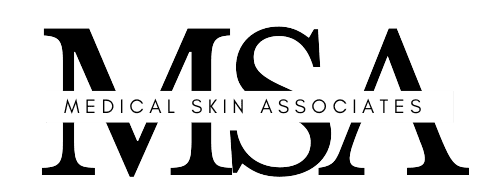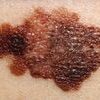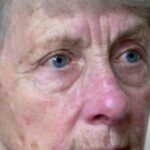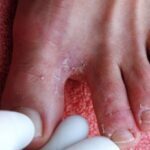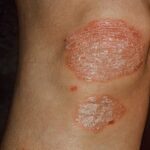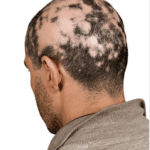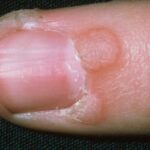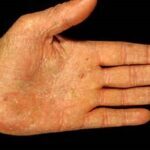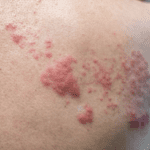Medical Services
Patient Education At Medical Skin Associates
Click on Each One to Learn More
Skin Cancer
Lentigines
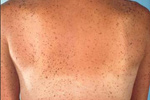 Lentigines, or liver spots, are benign lesions that occur on the sun-exposed areas of the body. The backs of hands and face are common areas. The lesions tend to increase in number with age, making them common among the middle age and older population. They can vary in size from 0.2 to 2 cm. These flat lesions usually have discrete borders, are dark in color, and have an irregular shape. No treatment required. They can be reduced with cosmetic BBL laser treatment or fading cream, which are not covered by medical insurance.
Lentigines, or liver spots, are benign lesions that occur on the sun-exposed areas of the body. The backs of hands and face are common areas. The lesions tend to increase in number with age, making them common among the middle age and older population. They can vary in size from 0.2 to 2 cm. These flat lesions usually have discrete borders, are dark in color, and have an irregular shape. No treatment required. They can be reduced with cosmetic BBL laser treatment or fading cream, which are not covered by medical insurance.
Basal Cell Carcinoma
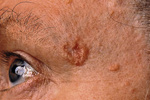 The most common appearance is a raised pink or pearly white bump that may have a translucent, rolled, pearly edge and small blood vessels. Some basal cell carcinomas are pigmented and may look like a mole with a pearly border. Another type is flat and scaly with a waxy appearance and an indistinct border. All of the basal cell carcinoma types have a tendency to bleed with minimal to no trauma. Treatments include electrodessication and curettage or excision, which are covered by most medical insurances.
The most common appearance is a raised pink or pearly white bump that may have a translucent, rolled, pearly edge and small blood vessels. Some basal cell carcinomas are pigmented and may look like a mole with a pearly border. Another type is flat and scaly with a waxy appearance and an indistinct border. All of the basal cell carcinoma types have a tendency to bleed with minimal to no trauma. Treatments include electrodessication and curettage or excision, which are covered by most medical insurances.
Seborrheic Keratosis
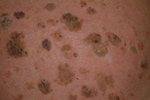 Seborrheic keratoses are lesions that don't ever turn into cancer. SK's for short, can look dangerous. In reality they are just annoying. Also irreverently called barnacles or age spots, they come in all different shapes and sizes from large black growths to barely noticeable raised areas. No treatment is required, but if irritating or inflamed treatment is typically with cryotherapy (freezing) which may be covered by most medical insurances.
Seborrheic keratoses are lesions that don't ever turn into cancer. SK's for short, can look dangerous. In reality they are just annoying. Also irreverently called barnacles or age spots, they come in all different shapes and sizes from large black growths to barely noticeable raised areas. No treatment is required, but if irritating or inflamed treatment is typically with cryotherapy (freezing) which may be covered by most medical insurances.
Squamous Cell Carcinoma
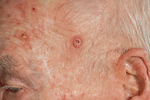 The skin change caused by squamous cell carcinoma most often looks like a scab, as they have a thick, adherent scale on a red, inflamed base. However, whereas a normal scab will heal within 2 weeks, a squamous cell carcinoma does not heal and may intermittently bleed. As it spreads into the dermis, this skin cancer can appear like an ulcer with hard, raised edges. The most common areas squamous cell carcinoma is found are in sun-exposed areas. Treatment is typically excision, which is typically covered by most medical insurances.
The skin change caused by squamous cell carcinoma most often looks like a scab, as they have a thick, adherent scale on a red, inflamed base. However, whereas a normal scab will heal within 2 weeks, a squamous cell carcinoma does not heal and may intermittently bleed. As it spreads into the dermis, this skin cancer can appear like an ulcer with hard, raised edges. The most common areas squamous cell carcinoma is found are in sun-exposed areas. Treatment is typically excision, which is typically covered by most medical insurances.
Actinic Keratosis
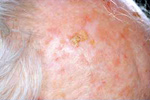 An actinic keratosis (AK) is a common precancerous skin lesion that grows slowly. If left untreated it can turn into a basal cell or squamous cell carcinoma. AK's are usually less than 1cm, scaly lesions that occur on sun-exposed areas. They can be flesh-colored, pink or red, feel like sandpaper and are often diagnosed easier by feeling them rather than seeing them. Treatments include cryotherapy (freezing), photodynamic therapy, or creams, which are typically covered by most medical insurances.
An actinic keratosis (AK) is a common precancerous skin lesion that grows slowly. If left untreated it can turn into a basal cell or squamous cell carcinoma. AK's are usually less than 1cm, scaly lesions that occur on sun-exposed areas. They can be flesh-colored, pink or red, feel like sandpaper and are often diagnosed easier by feeling them rather than seeing them. Treatments include cryotherapy (freezing), photodynamic therapy, or creams, which are typically covered by most medical insurances.
Melanoma
 Melanoma is a cancer in pigment-producing cells in the skin. Melanoma is the most dangerous type because the cancer can spread to other areas of the body, or metastasize. This cancer can be fatal, but early diagnosis and treatment can have excellent outcomes. History of family members increases your risk. Because of the complexity and risk of this skin cancer, your treatment plans will have to be discussed on an individual basis. Please see the ABCDE's of melanoma for more details.
Melanoma is a cancer in pigment-producing cells in the skin. Melanoma is the most dangerous type because the cancer can spread to other areas of the body, or metastasize. This cancer can be fatal, but early diagnosis and treatment can have excellent outcomes. History of family members increases your risk. Because of the complexity and risk of this skin cancer, your treatment plans will have to be discussed on an individual basis. Please see the ABCDE's of melanoma for more details.
ABCDE's Of Melanoma

A
Asymmetry
If you draw a line through this mole, the two halves will not match, meaning it is asymmetrical, a warning sign for melanoma.

B
Border
Early melanoma's borders tend to be uneven. The edges may be scalloped or notched.

C
Color
Having a variety of colors is another warning signal. A number of different shades of brown, tan or black could appear. A melanoma may also become red, white or blue.

D
Diameter
Melanomas usually are larger in diameter than the size of the eraser on your pencil (1/4 inch or 6mm), but they may sometimes be smaller when first detected.
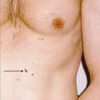
E
Evolving
When a mole is evolving, see a doctor. any change in size, shape, color, elevation, or another trait, or any new symptom such as bleeding, itching or crusting points to danger.
Psoriasis
Psoriasis is a chronic, inflammatory genetic condition in which patients develop scaling red bumps that form into plaques and typically occur but are not limited to the scalp, elbows and knees. Psoriasis is not curable; it can come and go by itself. There is a variety of treatments depending on the severity and extend of the disease. Treatment include, topical creams, injectables, and most recently oral medications which are proving to control the disease quite well.
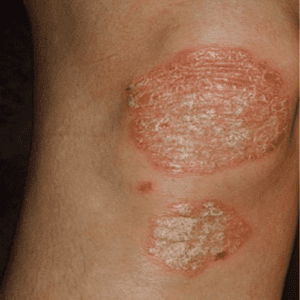
Eczema
Eczema is a genetic condition that presents in early childhood but can persist into our late years. It tends to localize in the creases or our arms and legs but can present anywhere. Unlike exposure to an allergen, this condition is not caused by a substance but rather is chronic but can improve over time with treatments.
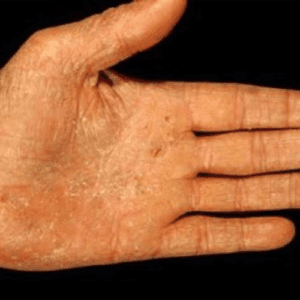
Rosacea
Rosacea is a chronic inflammatory condition of the face that is characterized by redness, dilated blood vessels, papules, pustules, and if left untreated long-term and lead to an overgrowth of connective tissue (as seen in the smaller picture.) Is superficially resemble teenage acne, but it occurs in adults. Persistent facial flushing is an early sign of the skin’s uncontrolled sensitivity to certain naturally produced inflammatory chemicals. Treatment of rosacea involves topical and oral drugs.
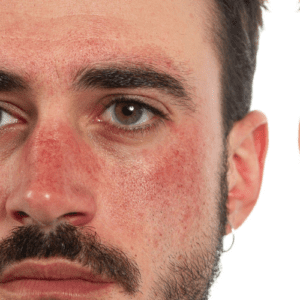
Alopecia
Alopecia encompasses various types of hair loss, often resulting in partial or complete baldness in affected areas. This condition can manifest in different forms, including alopecia areata (characterized by round patches of hair loss), alopecia totalis (loss of all scalp hair), and alopecia universalis (loss of all body hair). The exact cause of alopecia is complex and may involve a combination of genetic, autoimmune, and environmental factors. While there is no cure for certain types of alopecia, various treatments, including medications and therapies, may help manage symptoms and stimulate hair regrowth.
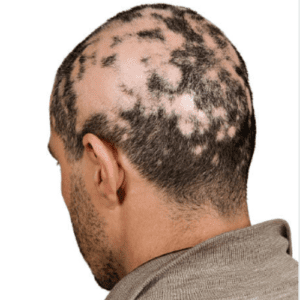
Rashes
Skin rashes are common dermatological conditions that can manifest in various forms, each with its own set of characteristics and causes. Some common types of rashes that our clinic encounters include: Contact Dermatitis, Hives, Ringworm, Lichen Planus, and Heat Rash. It's important to note that accurate diagnosis and appropriate treatment depend on a thorough examination. Individuals experiencing persistent or severe rashes should contact our office for an appointment.
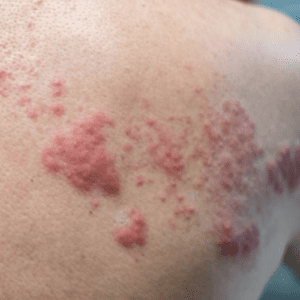
Fungal Infections
Fungal infections, common skin conditions caused by fungi, can affect various body areas. These infections, such as ringworm and athlete's foot, thrive in warm, moist environments. Symptoms include itching, redness, and sometimes blistering. At our clinic, we specialize in diagnosing and treating fungal infections through targeted antifungal therapies. Our experienced specailist tailor treatment plans to each patient, ensuring effective resolution. Prompt intervention and adherence to prescribed treatments are key to managing fungal infections, restoring skin health, and preventing recurrence.
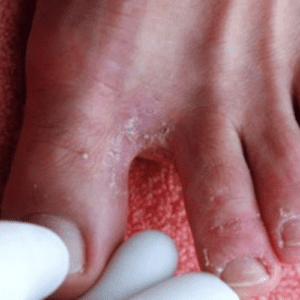
Warts
Although not medically alarming, warts are extremely common and are caused by one of over 200 viruses. They are contagious, meaning you can get them from touching a contaminated surface or even spread them from once area of your body to another by skin to skin contact. Warts are easily treated by various forms of treatment without a prescription.
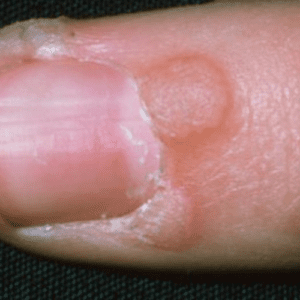
Acne
Acne, a common skin condition, arises when hair follicles become clogged with oil and dead skin cells. Resulting in various lesions, including pimples and blackheads, acne primarily affects areas with abundant oil glands, such as the face, chest, and back. Contributing factors include excess oil production, hormonal fluctuations, and bacteria. Treatment options range from topical creams to oral medications, with personalized plans addressing each individual's unique skin needs. Consistent skincare and professional guidance can effectively manage and prevent acne, fostering clearer and healthier skin.
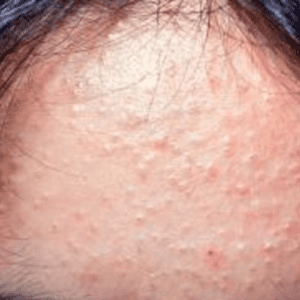
Resources
Website Links
About Skin Cancer: https://www.cancer.org/cancer/skin-cancer.html
Skin Cancer Prevention: https://www.skincancerprevention.org/
iPledge for Accutane users: https://www.ipledgeprogram.com/iPledgeUI/home.u
Melanoma Video: https://www.youtube.com/watch?v=_4jgUcxMezM
Dr. Gobert’s Board Certification Verification: https://www.theabfm.org/
Psoriasis: https://www.psoriasis.org/
Self Skin Exams: https://www.cancer.org/cancer/skin-cancer/galleries/skin-self-exam-gallery.html
Not quite sure yet?
Why not visit our contact page, we would love to chat with you!
